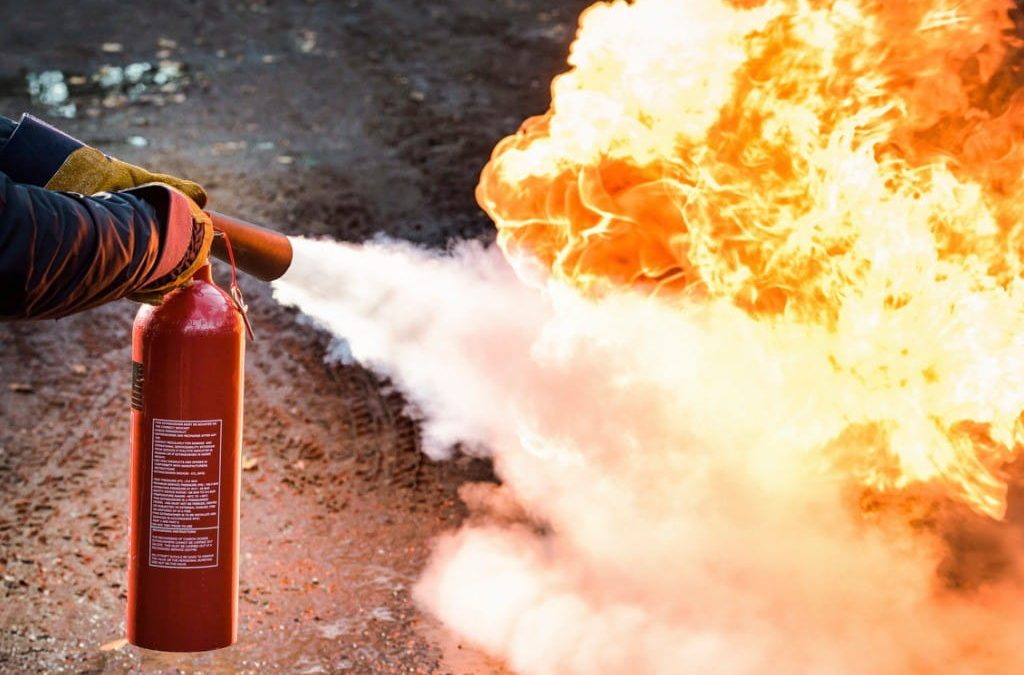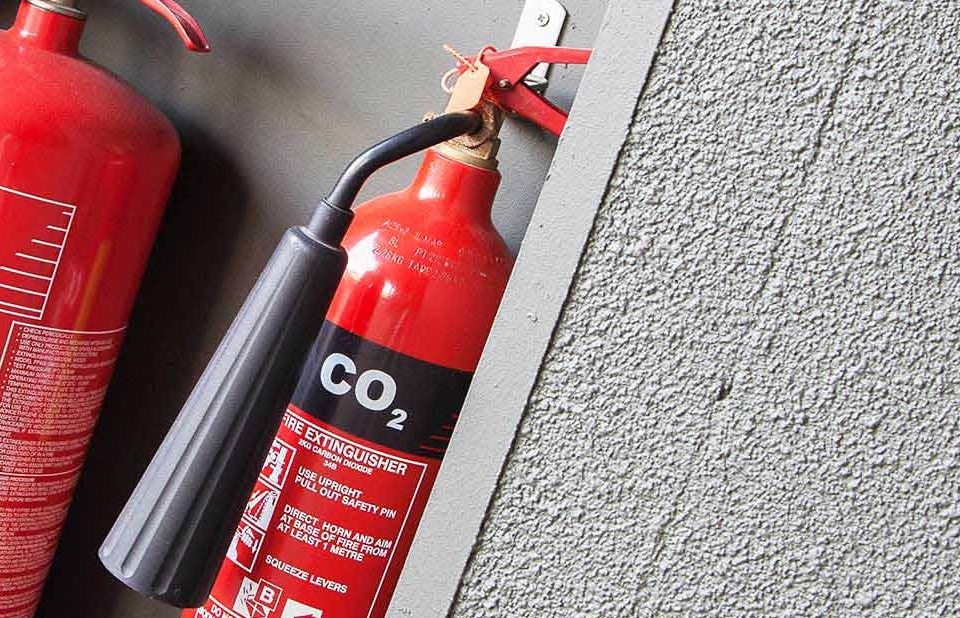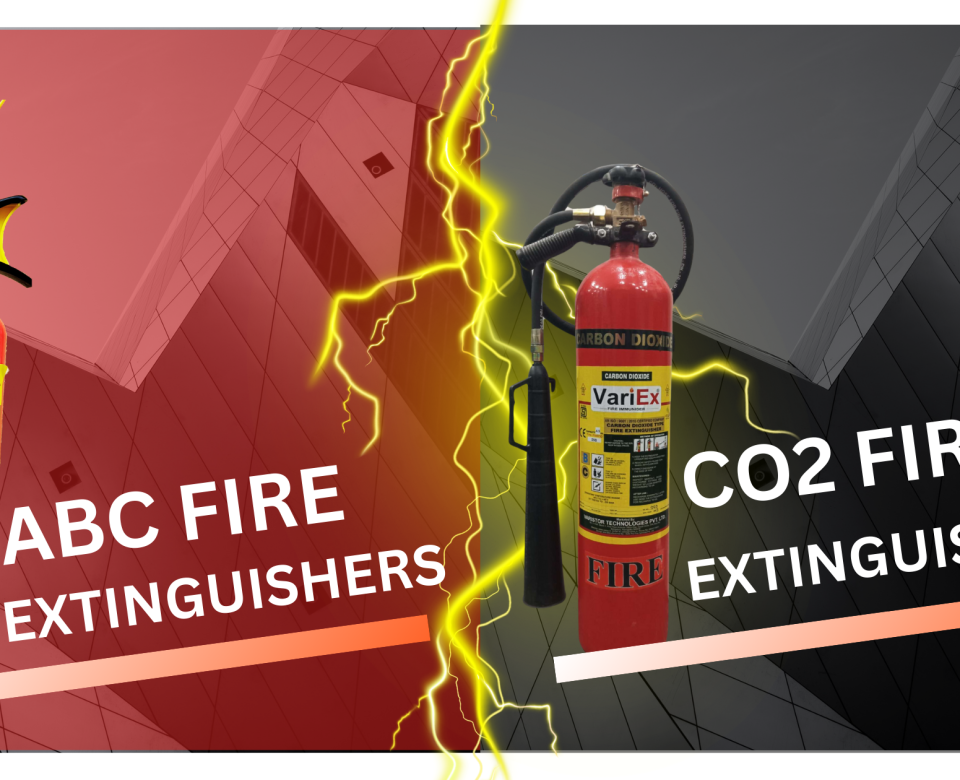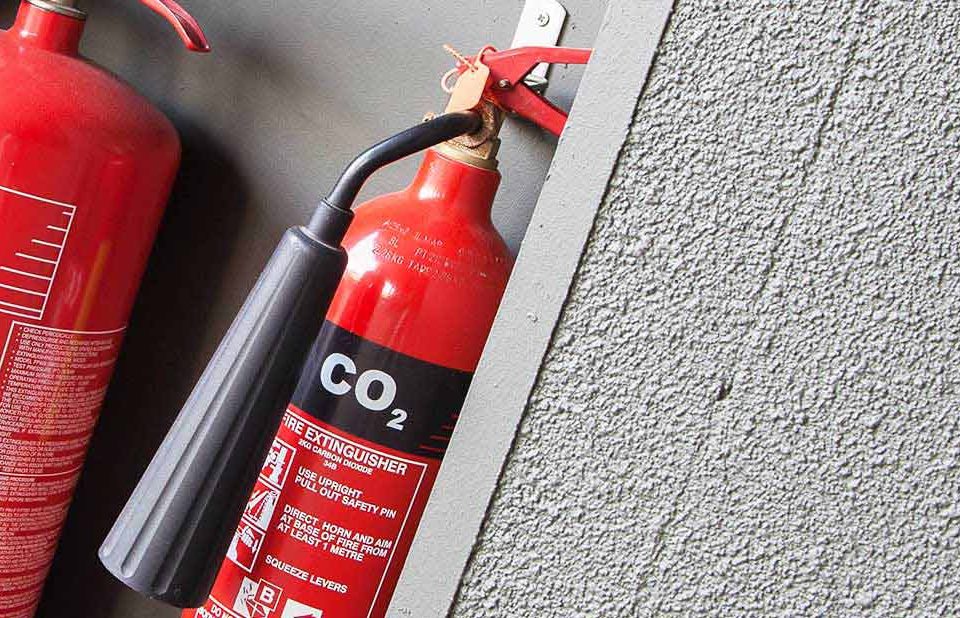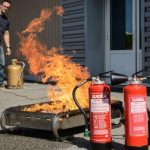
Can a Class K Fire Extinguisher Put Out a Grease Fire?
October 13, 2025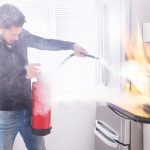
What Is the Best Type of Fire Extinguisher for Home Kitchens?
October 18, 2025Imagine you’re cooking your favorite meal at home when suddenly, a grease fire breaks out on the stove. These fires are surprisingly common in kitchens and can quickly become dangerous if not handled correctly. Grease fires pose unique risks because they spread fast and react violently to water. Knowing the right fire extinguisher to use is vital to protect yourself, your family, and your property. In this blog, we will explore what grease fires are, why they behave differently, and which type of fire extinguisher will put out a grease fire safely and effectively.
Understanding Grease Fires
A grease fire occurs when cooking oils or fats become overheated and ignite, usually during frying or deep-frying food. This can happen if the oil’s temperature rises beyond its flash point or when food is left unattended on the stove. Grease fires differ from other fires because the burning oil is extremely hot and can splash or spread rapidly if disturbed.
One critical fact to remember is that water is extremely dangerous when poured on a grease fire. Water sinks beneath the oil, instantly vaporizes into steam, and causes the hot oil to splatter and spread flames everywhere. This is why traditional firefighting methods like pouring water or using a standard fire extinguisher are not suitable for grease fires.
The Danger of Using the Wrong Extinguisher
Using the wrong extinguisher on a grease fire can increase the danger. For example:
- Water: Causes oil to splash and spreads the fire.
- CO₂ Fire Extinguisher: May not cool the fire sufficiently, allowing flames to reignite.
- Standard Fire Extinguisher: Not designed for oil fires and may be ineffective.
If the fire spreads due to wrong extinguishing methods, it could escalate rapidly, causing property damage and risk to life. This makes it crucial to use a fire extinguisher designed for grease fires.
The Right Fire Extinguisher for a Grease Fire: Class K
The ideal tool to combat a grease fire is the Class K fire extinguisher, also known as the wet chemical fire extinguisher. These extinguishers contain a special wet chemical agent designed to tackle high-temperature cooking oils and fats safely. Here’s how they work:
- The wet chemical agent cools the oil.
- It reacts chemically with the burning oil to create a soapy foam layer, a process called saponification, that seals the surface to prevent oxygen from fueling the fire.
Class K extinguishers are commonly installed in commercial kitchens such as restaurants, hotels, and cafeterias where there is significant use of cooking oil. However, many homeowners are now opting to have Class K extinguishers or fire balls in their kitchens for better safety.
Fire Extinguisher Types and Their Roles
| Extinguisher Type | Suitable for | Description |
| Wet Chemical (Class K) | Grease & cooking oils | Uses a wet chemical agent for saponification. |
| CO₂ Fire Extinguisher | Electrical fires | Uses carbon dioxide gas to suffocate the fire. |
| Fire Extinguisher Cylinder | Various fires | A common fire extinguisher container with different chemicals inside. |
| Fire Extinguisher Ball (Fire Ball) | Grease & small fires | Automatic fire suppression on contact. |
In Pakistan, you can find various fire protection products including fire extinguisher cylinders, fire balls, and gas-based extinguishers. For example, the fire extinguisher ball price in Pakistan varies depending on size and brand, but these are handy for quick kitchen fire response.
Alternative Extinguishing Methods for Small Grease Fires (Home Use)
If the grease fire is small and manageable, you can apply these methods safely:
- Use Baking Soda or Salt: Both can smother the fire. Avoid flour or baking powder as they can ignite.
- Smother with a Metal Lid or Fire Blanket: Cutting off oxygen to the fire helps extinguish it.
- Turn Off the Heat Source: Stop heating immediately to prevent the fire from growing bigger.
Always avoid using water or throwing anything flammable like flour on the fire.
How to Use a Class K Fire Extinguisher Correctly
The technique to use any fire extinguisher is summarized by the PASS method:
- Pull the pin to unlock the extinguisher.
- Aim the nozzle or hose at the base of the fire, not the flames.
- Squeeze the handle gently to release the extinguishing agent.
- Sweep the nozzle from side to side across the fire’s base until it appears out.
For grease fires, aim carefully to prevent oil from splashing, which could worsen the fire. After the fire is out, avoid touching hot surfaces and ventilate the room to clear smoke and fumes.
Grease Fire Prevention Tips
Prevention is always better than cure. Here are some simple tips to prevent grease fires:
- Regularly clean your stove and cooking surfaces to prevent grease buildup.
- Never leave oil heating unattended.
- Avoid overheating oil above its smoke point.
- Have a fire extinguisher, fire blanket, fire bucket, or fire ball readily available in the kitchen.
- Invest in a car fire extinguisher if you carry cooking equipment outdoors or in vehicles.
When to Call Emergency Services
If you find the grease fire spreading beyond control or you do not have the right equipment, evacuate everyone from the area immediately. Call emergency services right away. Remember, personal safety and evacuation come before trying to fight the fire.
Conclusion
Grease fires are a common hazard but can be managed safely if you have the right knowledge and tools. Only a Class K fire extinguisher or a wet chemical fire extinguisher is suitable to put out grease fires effectively without risk of spreading the fire. Alternatives like fire balls and fire blankets are useful safety additions.
Ensure your kitchen or commercial space is equipped with the right fire extinguisher according to your needs. Fire extinguisher price, availability of fire extinguisher balls, and cylinders vary, so invest wisely for your safety.
For expert advice, affordable fire extinguisher ball price in Pakistan, and installation services, contact Haseen Habib today. Protect your home and workplace before it’s too late!
FAQs
Can I use a regular fire extinguisher on a grease fire?
No, standard fire extinguishers are not suited for grease fires and can worsen the situation.
What should I do if I don’t have a Class K extinguisher nearby?
Use a fire blanket, a metal lid to smother the flames, or baking soda/salt, and call emergency services.
Is it safe to use baking soda on all kitchen fires?
Baking soda is effective primarily for grease fires but not for electrical or chemical fires.
How often should I check or maintain my kitchen fire extinguisher?
Fire extinguishers should be inspected monthly and professionally serviced once a year.
Are Class K extinguishers required for home kitchens?
Not always required, but highly recommended for homes that do frequent frying or cooking with oil.

